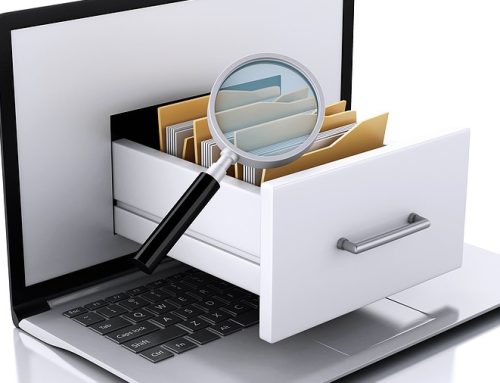Any business that has gone through a litigation process knows the discovery process well. Now, with most business information in electronic format, discovery has evolved into a complex process of gathering information in a multitude of formats. Understanding the basics of eDiscovery for business and planning ahead will save headaches down the road.
eDiscovery for Business Primer
Discovery involves gathering and sharing all evidence and witnesses for a pending legal case. It comes into play not only when someone files a lawsuit but also when a lawsuit is reasonably anticipated. For instance, if a customer suffers a significant injury while in a store, the store owners can reasonably expect the person will file a lawsuit.
eDiscovery refers to a large subset of Discovery that includes all electronic data that may be related to a case. As organizations conduct increasingly more business digitally, the body of information included in eDiscovery has grown exponentially. It can include data such as:
- Text, audio, and video messages from a variety of platforms
- Documents of all types
- Social media
- Video and digital photos
- Internet browsing history
- Call logs
- Data from smartphone apps
Metadata also forms an important part of the evidence collected. In simple terms, metadata describes data, specifying properties such as creation date and time, author, and location.

Steps Involved in eDiscovery
eDiscovery involves several steps that may be repeated in an ongoing process. These steps include identifying, preserving, collecting, processing, reviewing, producing, and then delivering electronic information. Businesses have a limited amount of time allotted to complete these tasks if they want to ensure their chances of successful litigation.
The steps can prove complicated. Businesses must first identify potential sources of relevant information. Data can live on servers, personal computers and laptops, cell phones and other digital devices, as well as the internet and intranet. They must then preserve the data against tampering and destruction. That preservation must happen in a legally defensible manner.
Once businesses have collected the relevant data, the data must be processed. This involves preparing it in a format that will allow attorneys to review it. Attorneys will analyze the data to eliminate redundant or irrelevant information before the data is produced as evidence at trial.
Information Governance is Key
Businesses that wait to organize their data until they receive a subpoena face an uphill battle. For instance, in a BYOD environment, relevant data may live on personal mobile devices, as well as company-owned laptops and servers. And accessing data on social media apps or messaging services may trigger privacy concerns.
Additionally, employees may mix work and personal data on the same device. And with so many apps and programs in use, each with its own data type, the sheer volume of data can create significant bottlenecks.
Businesses that practice solid information governance gain the ability to quickly identify and collect information. And because they organize the information effectively and practice defensible retention and deletion policies, they reduce the data sets delivered to attorneys. This speeds the process of case assessment, saving both time and money.

Partner with eDiscovery for Business Experts
Successful, defensible eDiscovery requires both experience and the right tools. The information governance and eDiscovery experts at Messaging Architects offer both. They begin by helping businesses categorize and store their data, implementing information access controls and comprehensive data security.
Additionally, automated retention and destruction policies, combined with compliance monitoring, help to ensure regulatory compliance. Finally, proactive eDiscovery delivers visibility into data across the organization. Thus, when a subpoena arrives, businesses can gather and process necessary information quickly and painlessly.








